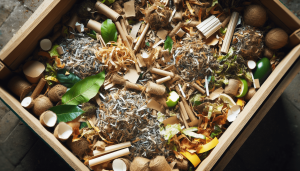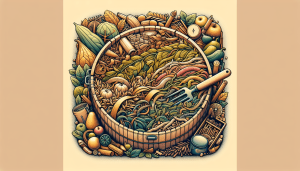Let’s dive into the wonderful world of composting! In our upcoming article, “What Types Of Bins Are Best For Composting?” we’ll explore the various options available for managing our organic waste effectively. Whether we’re seasoned gardeners or just starting out, choosing the right compost bin can make a huge difference in how smoothly our composting process goes. We’ll take a look at different bin types, such as tumblers, worm bins, and traditional compost bins, discussing the pros and cons of each to help us find the perfect fit for our needs. Join us as we uncover the secrets to successful composting and discover which bins will best transform our kitchen scraps into rich, valuable compost. Have you ever wondered what types of bins are best for composting? Whether you’re new to composting or an experienced gardener looking to upgrade your setup, selecting the right compost bin can make a world of difference. Today, we’ll walk you through the various options, helping you find the perfect bin to turn your organic waste into nutrient-rich compost.
Why Composting Matters
Before we dive into the types of compost bins available, let’s take a moment to appreciate why composting is so beneficial. Composting reduces landfill waste, lowers greenhouse gas emissions, and enriches the soil in our gardens. It’s a natural process that recycles organic material like kitchen scraps and yard waste into humus, a vital soil component full of nutrients.
The Basics of Composting
Understanding the fundamentals of composting is crucial when choosing a bin. Composting involves the aerobic decomposition of organic material by micro-organisms, resulting in a dark, crumbly substance known as compost. There are different methods to compost, including cold composting, hot composting, and vermicomposting.
Cold Composting
Cold composting is the most straightforward method. Basically, you pile organic material and wait for it to decompose naturally. This method is less labor-intensive but can take six months to a year to produce usable compost.
Hot Composting
Hot composting, in contrast, requires effort but yields faster results, typically within a few weeks to a couple of months. By maintaining a balance of green (nitrogen-rich) and brown (carbon-rich) materials and turning the pile regularly, we can ensure that the pile stays hot enough to decompose quickly.
Vermicomposting
This method involves worms, usually red wigglers, to help break down organic waste. It’s an excellent option for indoor composting and can be done in relatively small spaces. Vermicompost is incredibly rich in nutrients and is often referred to as “black gold” by gardeners.
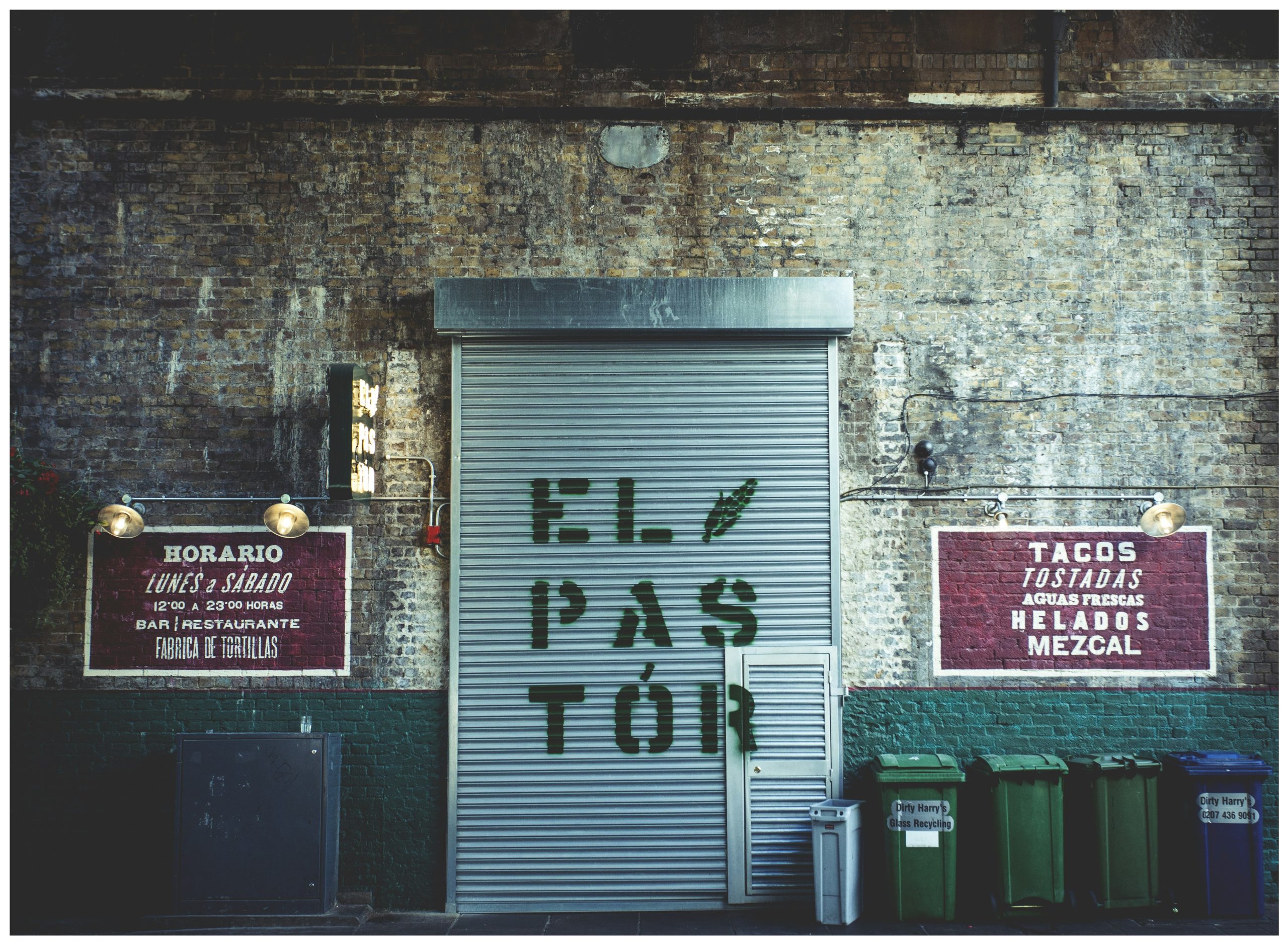
Understanding Different Types of Compost Bins
Now that we know the significance and basics of composting, we can better appreciate the importance of selecting an appropriate compost bin. There are several types of compost bins, each with unique features and benefits.
Stationary Bins
Stationary bins are the most common type of compost bins and are excellent for gardens. They are usually larger and can handle substantial amounts of yard and kitchen waste.
Open Bins
Open bins are simple structures, often made out of wooden slats or wire mesh. They offer excellent aeration but require manual turning of the compost material to speed up the process.
Advantages:
- Inexpensive
- Easy to build or purchase
- Excellent aeration
Disadvantages:
- Needs manual turning
- Can attract pests
Enclosed Bins
Enclosed bins, often made from plastic or metal, offer a more contained composting solution, keeping pests out and odors in.
Advantages:
- Pest-resistant
- Controls odor
- Can be aesthetically pleasing
Disadvantages:
- Can be more expensive
- May require more maintenance for aeration and moisture levels
Tumbler Bins
Tumbler bins are designed for easy turning, which accelerates the composting process. These bins are typically cylindrical and mounted on a frame for easy rotation.
Advantages:
- Speeds up composting process
- Easy to turn
- Usually pest-resistant
Disadvantages:
- Can be expensive
- Limited capacity
Worm Bins
Worm bins cater to those interested in vermicomposting. These bins house the worms and organic material, often in a tiered system that makes harvesting compost easier.
Advantages:
- Fast composting with rich results
- Ideal for small spaces and indoor use
- Less odor and fewer pests
Disadvantages:
- Requires maintenance of worm population
- May need specific temperature and moisture conditions
Bokashi Bins
Bokashi bins are a unique composting method that uses a special bran inoculated with microorganisms to ferment kitchen waste, including meat and dairy, which traditional composting often avoids.
Advantages:
- Can compost a wider variety of kitchen waste
- Fast fermentation process
- Minimal odor
Disadvantages:
- Requires special Bokashi bran
- Fermented waste needs to be buried or added to traditional compost
Trench Composting
Though not a bin, trench composting is worth mentioning. This method involves digging a trench or hole in the ground, adding organic material, and covering it with soil. It’s a straightforward option for those who don’t want a physical compost bin.
Advantages:
- Simple and cost-effective
- Enhances soil directly
Disadvantages:
- Labor-intensive
- Not suitable for all locations
Comparing the Types of Compost Bins
To help you decide which bin might be best for your needs, let’s compare these types side by side.
| Type | Speed of Composting | Maintenance Level | Suitable For | Cost | Capacity |
|---|---|---|---|---|---|
| Open Bin | Slow | Low | Large gardens | Low | High |
| Enclosed Bin | Medium | Medium | Urban or suburban backyards | Medium | Medium |
| Tumbler Bin | Fast | Low | Smaller spaces, quick compost | High | Medium |
| Worm Bin | Fast | Medium | Indoor, small outdoor spaces | Medium | Low |
| Bokashi Bin | Very Fast | Low | Indoor use, diverse waste types | Medium | Low |
| Trench | Medium | High | Large gardens, direct soil use | Very low | Variable |
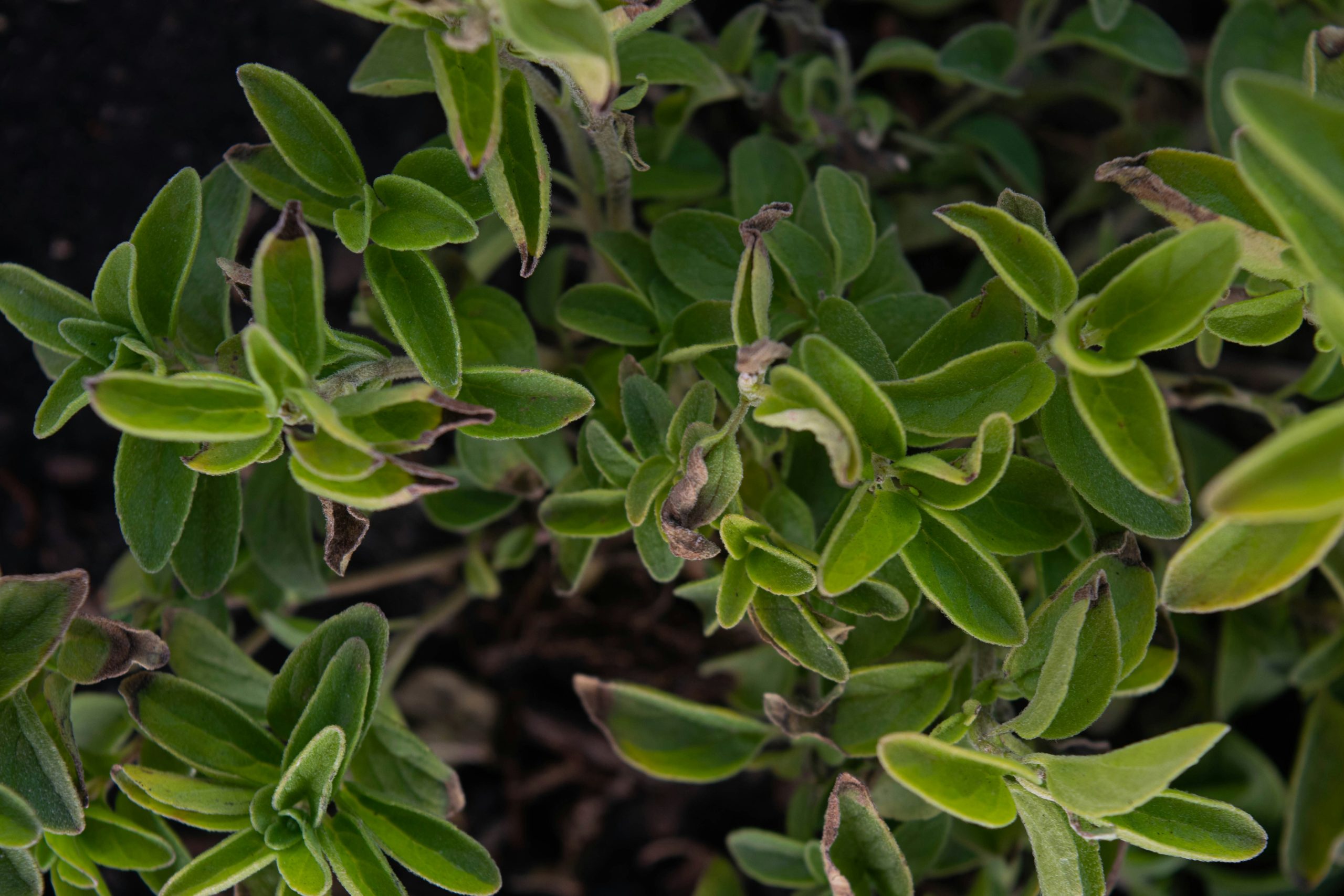
Factors to Consider When Choosing a Compost Bin
While knowing the types of bins is helpful, understanding your specific needs and circumstances is paramount. Here are some factors to consider:
Space Availability
The amount of space you have will significantly influence your decision. For example, if you live in an apartment with a small balcony, a worm bin or Bokashi bin might be ideal. Conversely, if you have a large yard, a stationary or trench composting system could work.
Type of Waste
Different compost bins handle different types of waste more effectively. If you primarily compost kitchen scraps, a worm bin or Bokashi bin might be best. If you have substantial yard waste, you might prefer an open or enclosed bin.
Budget
Your budget will also play a role. Open bins are often the least expensive, while tumbler bins can be more costly. Assess how much you’re willing to invest and what features are most important to you.
Composting Goals
Consider your goals. If you want compost quickly, a tumbler or worm bin might be the best choice. If you don’t mind waiting, an open bin could suffice.
Local Climate
Climate matters in composting. Worm bins, for example, need specific temperature ranges, and composting slows down in cold weather. Make sure to choose a bin that will work well in your local climate.
How to Maintain Your Compost Bin
No matter which type of bin you choose, proper maintenance will ensure your composting success. Here’s how to keep your compost bin in top shape.
Aeration
All compost bins need aeration to promote the aerobic bacteria that break down organic material. Turning the compost or having good ventilation in your bin will help.
- Open Bins: Turn the pile with a pitchfork.
- Enclosed Bins: Add air holes.
- Tumbler Bins: Rotate regularly.
Moisture Control
Compost should have the consistency of a damp sponge. Too dry, and decomposition will slow. Too wet, and it might start to smell.
- If too dry: Add water or high-moisture materials.
- If too wet: Add dry browns like leaves or straw.
Balance of Greens and Browns
Maintaining the right balance of nitrogen-rich greens and carbon-rich browns is key.
- Greens: Vegetable scraps, grass clippings
- Browns: Dried leaves, cardboard
Temperature Monitoring
If you’re hot composting, monitor the temperature. Aim for a range between 135°F and 160°F to kill pathogens and weed seeds.
- Thermometer: Use a compost thermometer.
- Insulate: In cooler climates, insulate your bin to keep it warm.
Pest Control
Keep pests out by avoiding meat, fats, and dairy unless you’re using a Bokashi bin.
- Cover food scraps: Always cover with browns.
- Secure bins: Ensure bins are closed tightly.
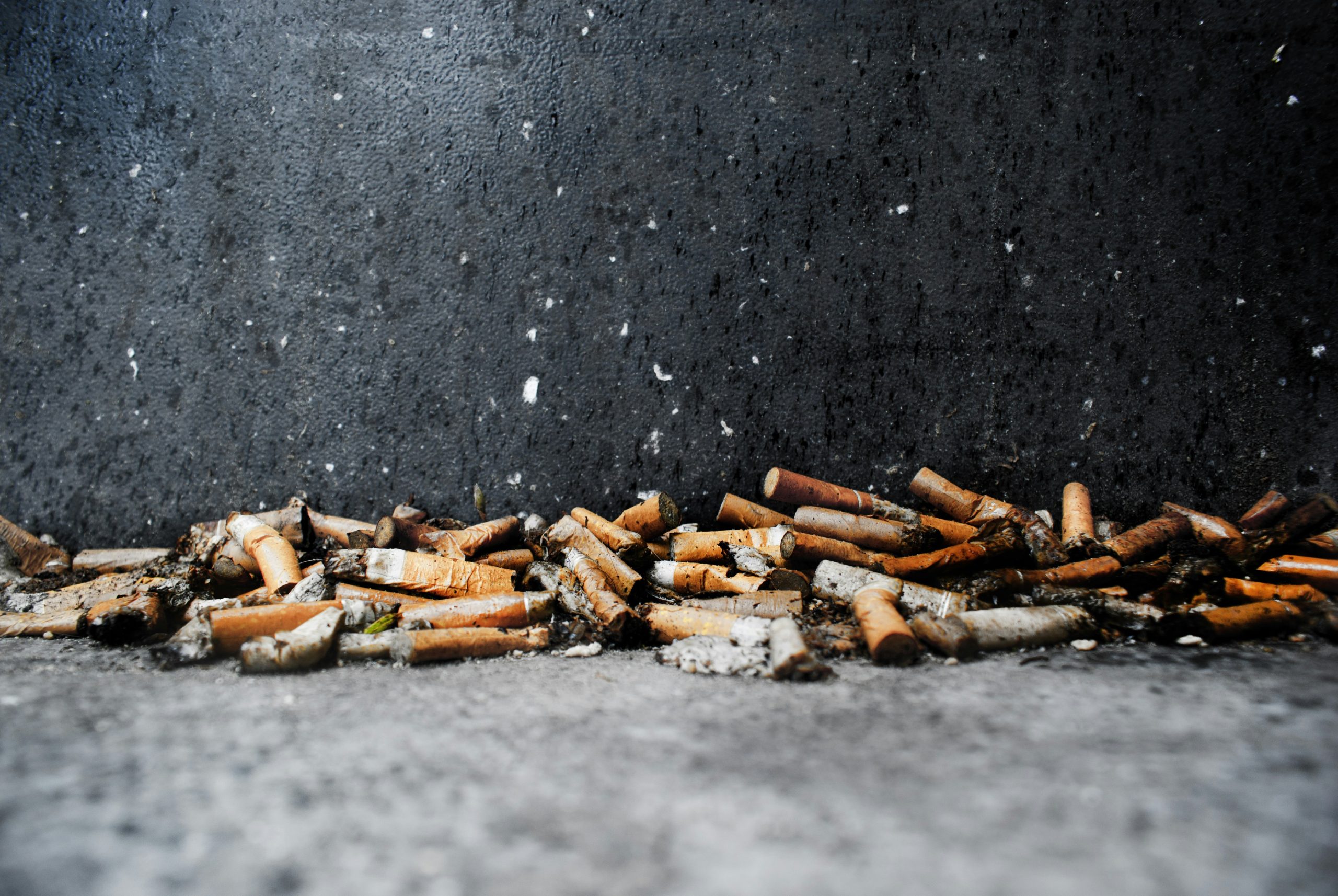
Troubleshooting Common Composting Issues
Even with the best setup, problems can occur. Here are common issues and how to solve them.
Bad Odor
Bad smells usually indicate too much nitrogen or too much moisture.
- Solution: Add dry brown materials and ensure adequate aeration.
Pests
Finding rodents or insects in your compost can be troublesome.
- Solution: Avoid meat/dairy, keep bin covered, and use pest-resistant bins.
Slow Decomposition
If your compost isn’t breaking down, something might be off.
- Solution: Increase aeration, balance green and brown materials, and maintain moisture.
Pile Too Dry
A dry pile won’t decompose effectively.
- Solution: Add water or moist green materials and mix thoroughly.
Pile Too Wet
A soggy pile can lead to a slimy mess.
- Solution: Add dry browns and turn the pile for better aeration.
Making the Final Decision
Choosing the right compost bin ultimately depends on your unique circumstances and needs. Take the time to evaluate your space, waste type, budget, composting goals, and climate. By considering these factors, you can select a bin that will make composting an enjoyable and productive endeavor.
Benefits of Composting
As we conclude our discussion, it’s important to reiterate the benefits of composting. Composting not only provides nutrient-rich amendments for our gardens but also substantially reduces greenhouse gas emissions. It helps recycle waste that would otherwise occupy landfills and can even save us money on fertilizers and soil conditioners.
By composting, we are participating in a cycle of sustainability, turning waste into valuable resources and promoting healthier ecosystems both in our gardens and beyond.
Conclusion
We’ve covered a lot of ground, from the basics of composting to a detailed comparison of various bins. Whether you choose an open bin, enclosed bin, tumbler, worm bin, Bokashi bin, or even trench composting, the most important thing is to start. Composting is a rewarding practice that benefits our environment, our gardens, and our sense of well-being as stewards of the Earth.
So, what type of bin will you choose for composting? Whatever your decision, we wish you the best of luck on your composting journey. Let’s turn our waste into wealth, one bin at a time!

